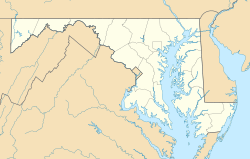Klej Grange, Maryland facts for kids
Quick facts for kids
Klej Grange, Maryland
|
|
|---|---|
| Country | United States |
| State | Maryland |
| County | Worcester |
| Elevation | 30 ft (9 m) |
| Time zone | UTC-5 (Eastern (EST)) |
| • Summer (DST) | UTC-4 (EDT) |
| ZIP code |
21851
|
| Area code(s) | 410, 443, and 667 |
| GNIS feature ID | 585326 |
Klej Grange is a small, quiet place in Worcester County, Maryland, United States. It's known as an unincorporated community, which means it doesn't have its own local government like a city or town. You can find it about three miles (5 km) northwest of Stockton, right where Klej Grange, Betheden Church, and Ward Roads meet.
Where Did the Name Klej Grange Come From?
The unusual name "Klej" was created by a man named Joseph William Drexel. He took the first letter from the names of his four daughters: Katherine, Lucy, Elizabeth, and Josephine. The word "Grange" might be connected to a group called the National Grange, which is an organization that supports farmers and rural communities.
The History of Klej Grange
This area was first called Trap or Traptown. Later, for many years in the 1800s, it was known as Lindseyville. The community grew at a crossroads where important roads met. These roads led from Mattapony Landing on the Pocomoke River to Sandy Hill (which is now Stockton) and from Snow Hill to Stevens Landing (now Pocomoke City).
Joseph Drexel's Big Idea
In 1878, Joseph William Drexel bought a large piece of land from the Lindsey family. He had a special plan for this land. Drexel wanted to create a community where poor people could buy farmland at a low cost. His goal was to help those who didn't have jobs or homes. He hoped they could learn farming and build new lives.
Joseph Drexel was a very wealthy man. His father had started a big banking company. Joseph was known for his generous acts. He owned other large farms where he helped people learn skills and find work. He even had a farm near New York where people without jobs could stay, eat, and learn agriculture. He planned to do something similar with 7,000 acres (2,833 hectares) in Michigan too.
Sadly, Drexel's project in Klej Grange ended when he passed away in 1888. His wife and daughters had different interests and soon sold the property. Much of the land eventually went to a company called Worcester Realty Co. Like many similar projects, Klej Grange slowly returned to being a quiet, rural area after Drexel's dream was cut short.


